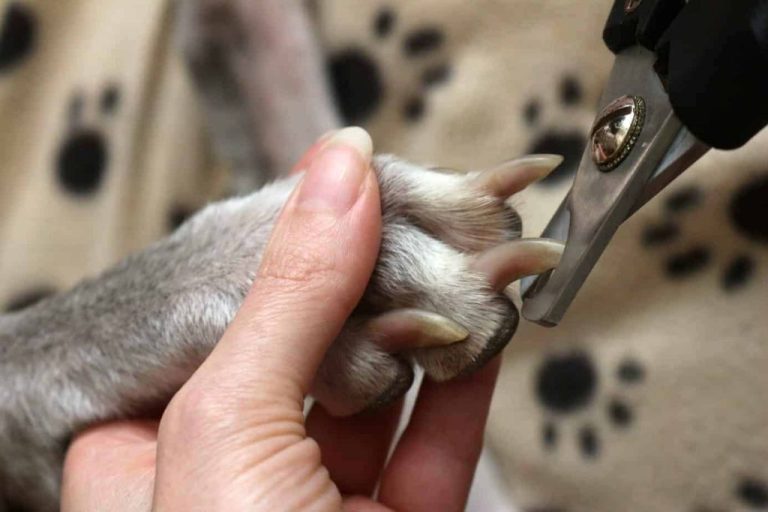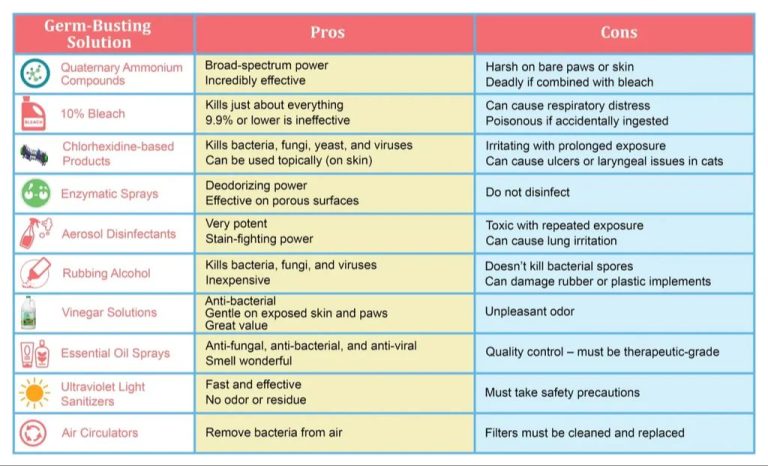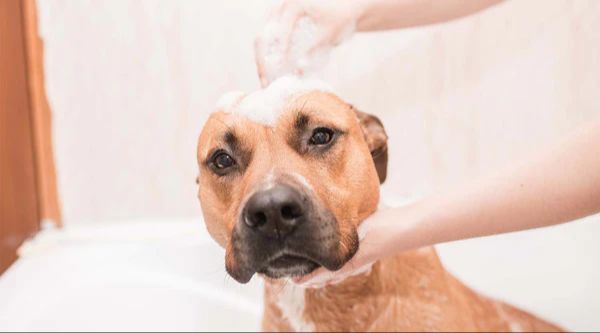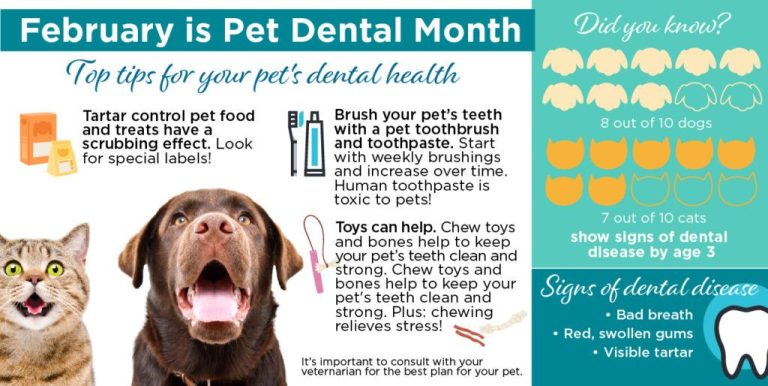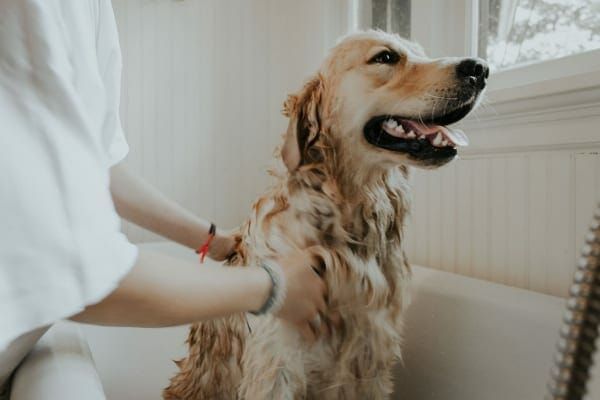Choosing The Right Shampoo For Your Dog’S Coat Type
Choosing the right shampoo for your dog’s specific coat type is extremely important for maintaining their health and appearance. A dog’s coat plays a critical role in regulating body temperature and protecting them from the elements. Using a shampoo made for their coat can ensure it stays in optimal condition.
The wrong shampoo can dry out your dog’s skin, strip their coat of essential oils, and damage the hair follicles. This can leave their coat looking dull or feeling rough and brittle. In some cases, it may even lead to skin irritation, itchiness, and hair loss if used repeatedly.
That’s why investing some time to identify your dog’s coat type and their grooming needs is well worth it. Whether they have a short and smooth coat, long and silky fur, or thick and wooly hair, there is a shampoo formula that will cleanse thoroughly without disrupting their skin’s pH balance or natural oils.
This guide will go over how to assess your dog’s specific coat qualities, review ingredients to look for or avoid, provide tips for bath time, and recommend shampoos for some common breed coat types. With the proper shampoo, you can keep your dog’s skin and coat looking its absolute best.
Factors That Determine Coat Type
A dog’s coat type is primarily determined by its breed and genetics. However, there are other factors that can influence coat type as well:
Breed – Each dog breed has a typical coat type associated with it. For example, Labrador Retrievers tend to have short, dense double coats while Poodles have dense, curly single coats. Breed standards outline the ideal coat characteristics for that particular breed.
Genetics – Canine coat genetics involve several genes that control length, texture, curl, and shedding. The combinations of these genes inherited from a dog’s parents establish the overall coat type. Even within breeds, individuals can vary somewhat in coat due to normal genetic variation (Chris Christensen).
Age – Puppies often have softer, finer coats that change texture as they mature. It usually takes 1-2 years for an adult coat to fully come in. Some breeds also experience coat changes with aging.
Environment – Factors like climate, nutrition, and health can affect coat to some degree. For example, dry air or nutritional deficiencies may cause dull, brittle coats. However, environment cannot drastically change a dog’s genetically-determined coat type.
Common Coat Types
There are several common types of dog coats:
Smooth
Smooth coats are short, flat, and slick against the body with no feathering or fringe (1). Smooth coated breeds include Dobermans, Boxers, Bulldogs, Boston Terriers, and more. The smooth coat requires minimal grooming but benefits from occasional brushing and bathing to remove dead hair and distribute oils.
Wire
Wire coats are rough, coarse outer coats with a dense undercoat. This combination helps protect dogs like Terriers from wind, dirt, debris, and water (2). The wire coat needs regular brushing and hand stripping to prevent matting and remove dead hair. Bathing should be done only when absolutely necessary.
Curly
Curly coated dogs have tight curls or waves throughout their coat like Poodles and Bichon Frises. Their coats do not continuously grow but require frequent clipping and grooming every 4-8 weeks. Curly coats tend to mat easily, so daily brushing is ideal along with occasional bathing.
Long
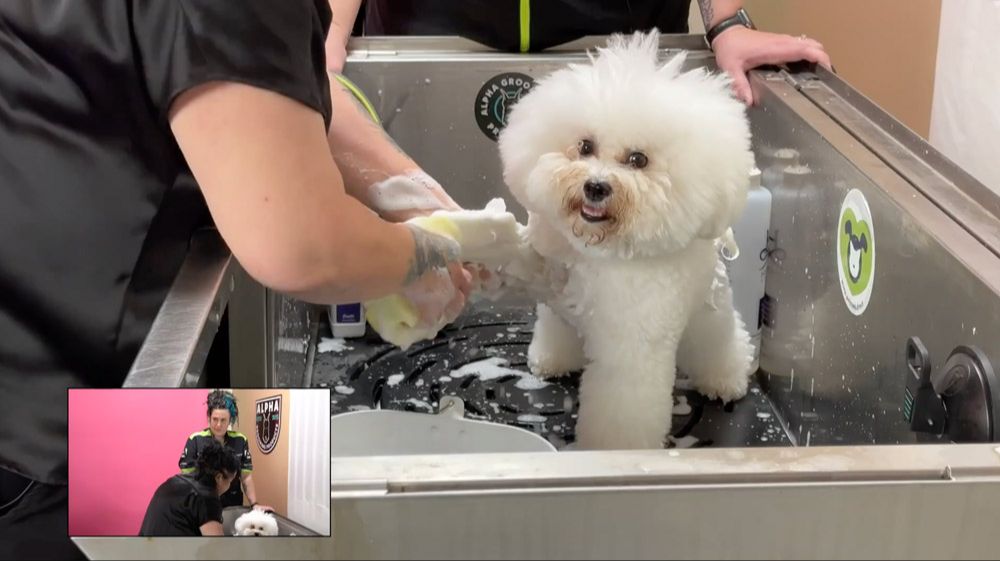
Long coated dogs have longer fur over their body that requires daily brushing to prevent tangles and mats. Examples include Collies, Pekingese, and Lhasa Apsos. Long coats need more frequent bathing and grooming every 6-8 weeks for thinning and trimming.
(1) https://petwaypetcare.com.au/info/coat-types/
(2) https://news.orvis.com/dogs/a-guide-to-dog-coat-types
Ingredients to Look For
When selecting a shampoo for your dog, look for formulations that contain natural, gentle cleansers that won’t strip the oils from your dog’s skin and coat. Some ingredients to look for include:
Oatmeal – Oatmeal contains natural emollients that help moisturize and soothe itchy, dry skin. The colloidal oatmeal found in dog shampoos is finely ground so it can cleanse deeply. According to Christiesdirect.com, oatmeal also helps relieve irritation and inflammation.
Aloe Vera – Aloe vera is a plant extract that is highly beneficial for skin and coat health. It contains amino acids and fatty acids that strengthen hair, as well as antioxidants and vitamins that promote healthy skin. Aloe vera also has anti-inflammatory and antimicrobial properties to help soothe and heal skin issues. Christies Direct notes aloe vera is great for treating skin conditions and strengthening hair.
Glycerin – Glycerin is a humectant that helps draw moisture into the skin and coat. It hydrates, softens, and adds shine. Glycerin is gentle and non-irritating for most dogs. It also helps other beneficial ingredients penetrate deeper into the skin and coat.
Ingredients to Avoid
There are certain ingredients commonly found in dog shampoos that should be avoided. These ingredients can irritate your dog’s sensitive skin and coat.
Sulfates like sodium lauryl sulfate (SLS) and sodium laureth sulfate (SLES) are harsh detergents that can over-strip the oils from your dog’s coat and skin leading to dryness and irritation (Source). Sulfates give shampoos their foaming ability but are too harsh for regular use.
Alcohol like isopropyl alcohol is another ingredient to avoid as it can be very drying to your dog’s skin (Source). Dog’s have sensitive skin that can easily become irritated by alcohol-based shampoos.
Artificial fragrances, perfumes, and dyes are also problematic ingredients for dogs. Dogs have a strong sense of smell so artificial fragrances can be overpowering. Dyes serve no benefit and may cause skin irritation.
Opt for gentle, natural ingredient shampoos without any of these harsh chemicals. Your dog’s skin and coat will thank you!
Shampoos for Specific Coat Types
The right shampoo can make a big difference in keeping your dog’s coat healthy and shiny. Here are some recommendations for different coat types:
Smooth Coats
Dogs with short, smooth coats like Labradors and Dobermans need a gentle, hydrating shampoo. Look for moisturizing ingredients like oatmeal and aloe. Earthbath Oatmeal & Aloe Dog Shampoo is a top choice for smooth coats [1].
Wire Coats
Terriers and schnauzers with wiry coats need a shampoo that won’t strip the natural oils. Try Nature’s Miracle Supreme Odor Control Shampoo which cleans while replenishing coat oils [1].
Curly Coats
Poodles and Bichon Frises have thick, curly coats prone to tangles. Use a moisturizing, detangling formula like TropiClean Luxury 2 in 1 Papaya & Coconut Shampoo [1].
Long Coats
For dogs with long, flowing coats like Collies and Afghan Hounds, look for a nourishing shampoo like Nature’s Miracle Supreme Odor Control Shampoo to promote growth and prevent tangles [1].
How Often to Bathe Your Dog
How frequently you should bathe your dog depends on several factors, including their breed, coat type, and lifestyle according to the American Kennel Club[1]. Dogs with short, smooth coats may only need bathing every few months. Dogs with longer or thicker coats that are more prone to shedding and collecting dirt and odors may need bathing every 4-6 weeks. Active dogs that spend time outdoors and get dirty will likely need more frequent baths than indoor dogs.
Bathing too often can strip away essential oils and lead to dry, irritated skin so it’s best to not overdo it. The general recommendation is to bathe most dogs no more than once a month, unless they get exceptionally dirty. Talk to your vet if you notice signs of skin irritation after bathing. They can advise you on an appropriate bathing schedule for your dog’s specific coat type and lifestyle.
Bathing Tips and Techniques
Properly bathing your dog requires following some key tips and techniques. This will make the process easier for both you and your pup.
First, be sure to brush your dog’s coat thoroughly before bathing. This will remove dead hair and prevent tangles or matting when wet [1]. Next, adjust the water to a lukewarm temperature to keep your dog comfortable. Test it on your wrist or elbow before wetting your dog down. Avoid using extremely hot or cold water, as this can be shocking or stressful [2].
When shampooing, focus on the areas that tend to get dirtiest like the feet, underbelly, and rear. Be sure to thoroughly rinse out all traces of shampoo, as residues can cause skin irritation. You may need to do multiple rounds of shampoo and rinse to fully cleanse the coat. Finally, towel dry your dog as much as possible before using a blow dryer on a cool setting to finish drying the fur and avoid matting [3].
Signs of Skin/Coat Issues
There are several signs that may indicate your dog is having problems with their skin or coat. Some of the most common include:
Dryness – If your dog’s skin appears flaky, scaly, or excessively dry, it could be a sign of skin irritation or an underlying health issue. Dry skin can progress to dandruff or more severe skin inflammation if left untreated.
Irritation – Red, inflamed skin or rashes can signal yeast infections, allergies, parasites, or other skin conditions. Dogs may obsessively lick, bite, or scratch at irritated skin, which can lead to further inflammation or lesions.
Excessive shedding – While some shedding is normal, excessive loss of hair beyond your dog’s regular shedding seasons can indicate skin problems. Hair loss, thinning coats, and bald patches warrant a veterinary exam to diagnose the cause.
Other signs like odor, visible red bumps or sores, greasy skin and hair loss need veterinary attention. Skin and coat issues are very common in dogs. With proper care, nutrition, and treatment, most conditions can be managed for your dog’s comfort and health.
Sources:
https://www.webmd.com/pets/dogs/ss/slideshow-skin-problems-in-dogs
https://vcahospitals.com/know-your-pet/coat-and-skin-appearance-in-the-healthy-dog
When to See a Vet
If your dog’s skin issues persist or seem to be getting worse after trying over-the-counter treatments and changing shampoos, it’s a good idea to have your vet take a look. According to this article, some signs that warrant a trip to the vet include excessive scratching, hot spots, hair loss, scabs, and peculiar odors. Severe reactions to a new shampoo, like hives or swelling, also require immediate veterinary care.
Your vet can help diagnose the underlying cause of your dog’s skin problems, whether it’s allergies, parasites, infections, or something else. They can provide prescription shampoos, antibiotics, antihistamines, or medicated wipes that may be more effective than over-the-counter options. Be prepared to give your vet a history of your dog’s diet and grooming routine. Bringing a photo or sample of the shampoo that caused issues can also help identify irritating ingredients to avoid in the future.
With your vet’s guidance, you can get your dog’s skin soothed and healed while also finding a shampoo that nourishes their coat instead of causing harm. Don’t hesitate to seek medical care if your dog has severe or persistent skin issues that shampoo changes don’t seem to help.

